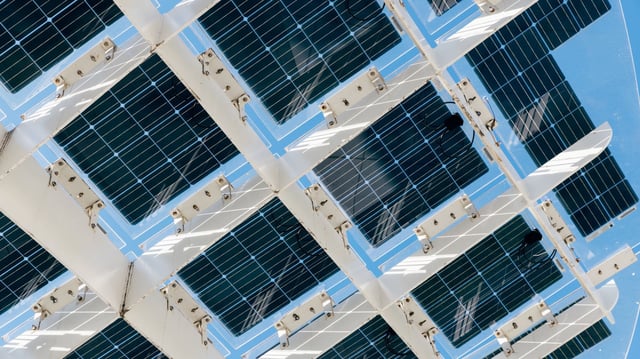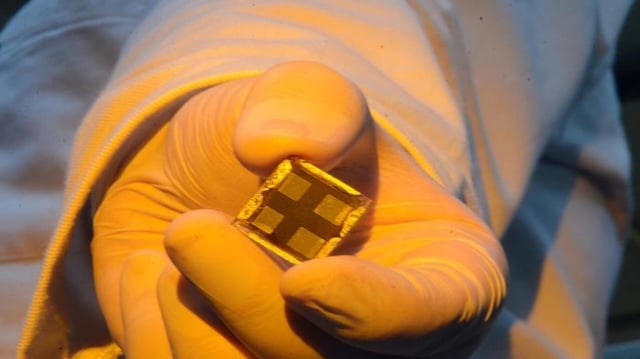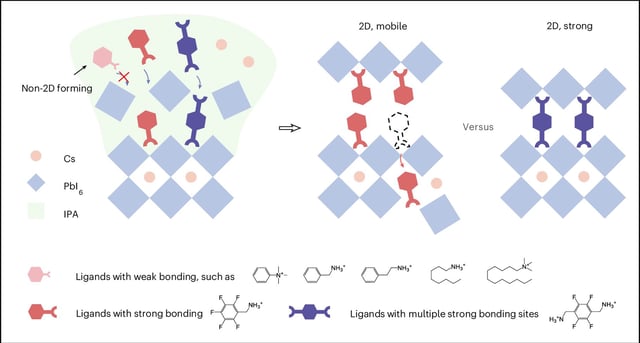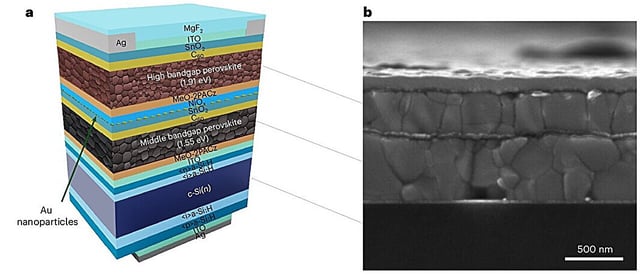Overview
- A University of Sydney–led team set triple‑junction perovskite–perovskite–silicon records with 27.06% efficiency on a 1 cm2 cell and an independently certified 23.3% steady‑state efficiency on a 16 cm2 device.
- The 1 cm2 cell passed IEC Thermal Cycling with 200 swings between −40°C and 85°C and retained 95% of its performance after more than 400 hours of continuous light exposure.
- Stability and efficiency gains were achieved by replacing methylammonium with rubidium, using piperazinium dichloride for surface treatment, and optimizing gold nanoparticles as the interconnect.
- Researchers at Kaunas University of Technology reported fully inorganic perovskite cells exceeding 21% efficiency and mini‑modules near 20% that operated stably for over 950 hours at 85°C under continuous illumination.
- The advances, published in Nature Nanotechnology and Nature Energy, pair high efficiencies with standardized durability testing, moving the field toward practical deployment while large‑scale manufacturing and long‑term outdoor validation remain to be proven.



